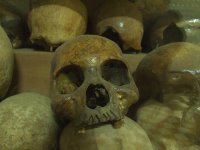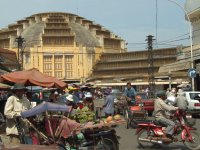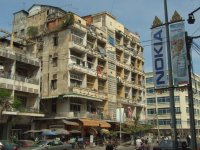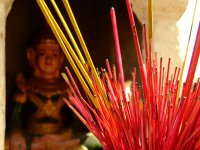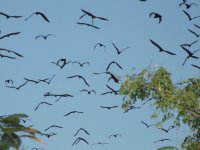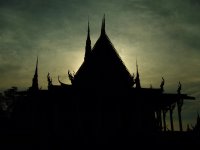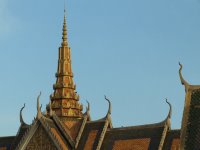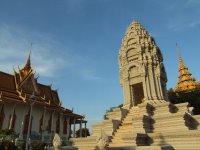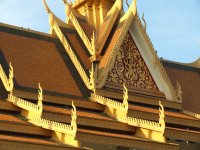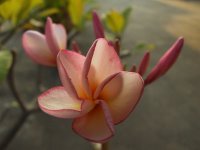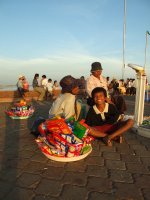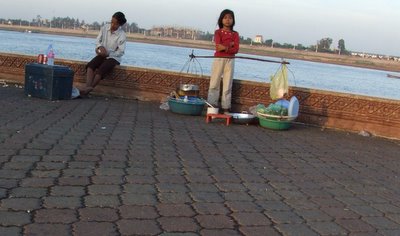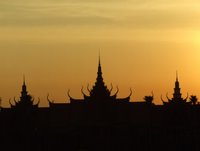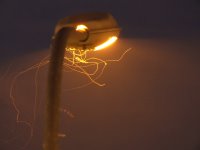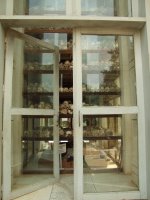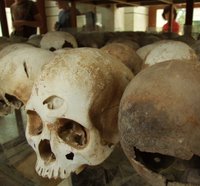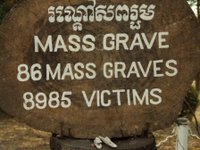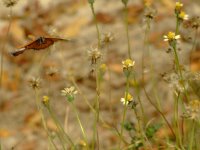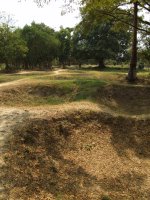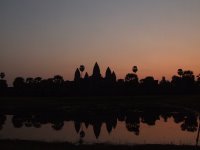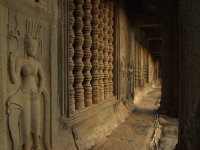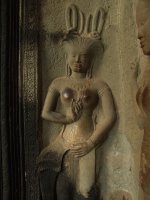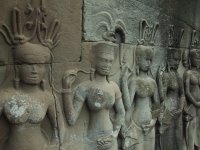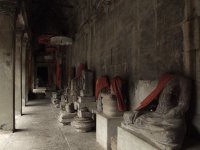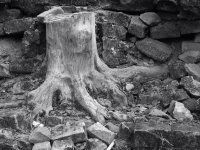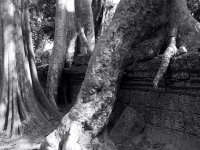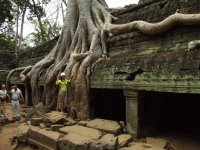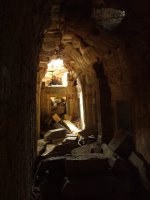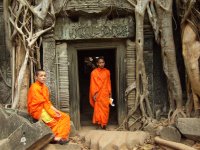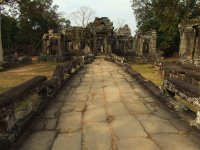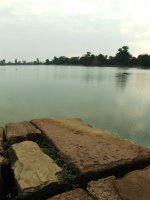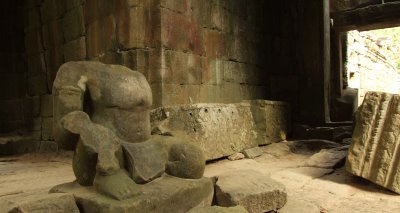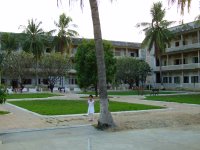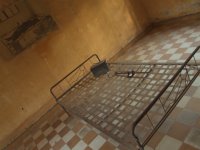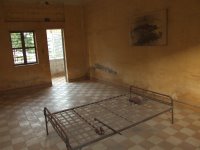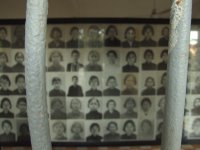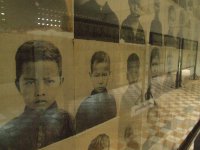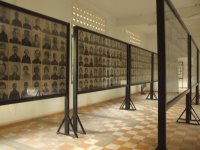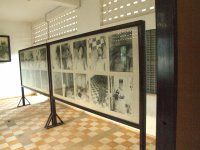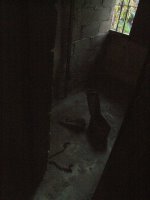Indonesian Vignettes
Our time in Indonesia has been quite random so far. As have my sleeping patterns. Up at 4am this morning then slept for 4 hours this afternoon, so now I'm typing instead of going to bed at a sensible time.
Here are some of the choicest moments so far, I'll post about the splendours of our almost-dawn trip to Boro Budur and almost-noon trip to Parambanan next time.
The smallest, cutest, airport I've ever seen
Foreigners queue up to buy a 'Visa On Arrival' visa at a separate counter as the locals (South East Asians) form an enormous, snaking queue to the two actual immigration officers. Each VOA Visa takes what seems like an age to process, all the time the immigration queue is not moving. I finally get my VOA then the clerk tells me to go to the front of the queue. I push past all the waiting locals, lend my pen to the head immigration officer (so he can cross out the bit on the rubber stamp that says 'valid for 7 days' and write 'valid for 30 days' instead) and on (two metres) to the baggage reclaim. A counter separates we-without-bags from the flimsy looking girl with all the bags strewn around on the floor behind her. I give her my baggage tags (the stickers you always get given at check-in, but I've never had need for before today) and point out Harvey's bag (he's still queueing - remember the long and static queue for locals? And he was so happy before that Malaysians didn't need a visa!). Mine is nowhere to be seen. After some gesturing I manage both to convince her that I really do have two backpacks and that the missing one is green. She smiles a lot, then pushes over a green suitcase to reveal mine hiding underneath. Struggling a little she lifts it up and passes it over the counter to me - it's only 12kg. How does she manage the really heavy ones?
Rain
Real rain. The first we've seen this holiday. Man-sized drops of monsoon rain pour from the sky. But only for a few minutes, as the celestial orchestra goes through it's overture, warming up, as people on motorbikes and cyclo taxis cower under plastic sheeting we are warm and dry in our taxi from the airport.
A narrow alley and a wide courtyard
Our taxi turns into an incredibly narrow alley, less than twice the width of the car. The rain is still falling. We think this is the right street, but you're never sure when relying on a Rough Guide...
Halfway down the alley we stop. The driver sounds his horn and a smiling face appears, with an umbrella, to undo the gates. The gates open from what was a narrow and uninviting alley into a wide courtyard, surrouded by open fronted buildings. It's not the Ritz (the rooms are basic) but they have a pool, a variety of bizarrely ornate furniture, their own Gamelan orchestra room and very friendly staff, who inform us that it's Javanese (and muslim) new year's eve and there's a procession in town if we hurry.
The mysterious artifact
We found the procession in the end. It was just a crowd of people waiting when we arrived, and then they started. A man in what appeared to be a flowery skirt (not so unusual here - it was a batik sarong) and high heels (unusual everywhere) led the procession, walking slowly. Very slowly. Almost wedding march style.
Behind him came a variety of groups. A group of teenage martial artists in blue tracksuits. A group of men in sarongs walked barefoot on the wet roads. A group carrying an enormous spear, wrapped and horizontal, on their shoulders. A group carrying kris knives tucked into their belts. Near the back a group carried, sedan style, a glass box with curtains. We couldn't quite see what was inside. Harvey tried asking some of the locals, but nobody gave a clear answer - 'a weapon', 'the power', 'royal thing' were the mysterious half answers.
Two days later I saw a mention of the procession in the paper. Apparently it was a royal waistcoat.
---
Time to try and sleep - although we've got a lie in tomorrow. No need to get up until 8am.
